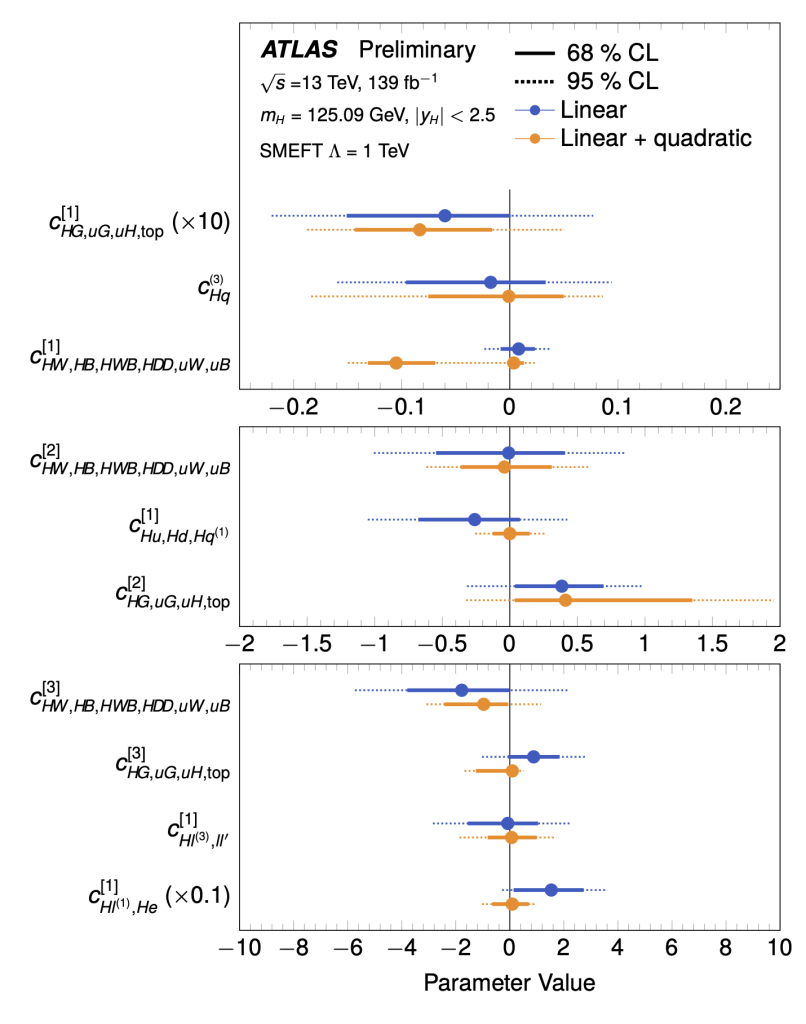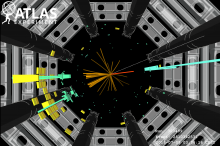ATLAS probes for new physics using EFT techniques
One of the main objectives of the LHC physics program is the discovery of new physics that could shed light on phenomena that are not explained by the Standard Model (SM) – for instance, dark matter or the matter-antimatter asymmetry of the universe.
In the best case scenario, physics beyond the Standard Model (BSM) could manifest itself as a new resonance (a narrow peak) similar to the one that heralded the discovery of the Higgs boson in 2012. However, these signals, if they exist, could well turn out to lie at energies that are out of reach of even the LHC. Even then, all is not lost: just as gently sloping terrain may hint at the presence of a mountain peak ahead, information in the data accessible to the LHC may provide indirect evidence for new physics signals that are just out of reach.
These effects can be studied in the context of Effective Fields Theories (EFT) – a framework in which deviations between the SM and data are interpreted as new interactions between the usual SM particles, called “effective” interactions. These can either change the strength of the known interactions, or introduce altogether new processes. If they are observed, their pattern could in turn provide indications as to the properties of the new physics that lies beyond. Their signals are however expected to be subtle, especially if the energy scale of the new physics is far above the LHC’s reach, and precise measurements are therefore required. Since effective interactions affect all of the SM, they are best determined by combining measurements from all of its sectors: in particular the properties of W and Z and Higgs bosons, of top quarks, as well as other quark-flavor measurements.
A new ATLAS analysis released last week probes for new physics using EFT techniques, using measurements of Higgs boson coupling properties as inputs. Although no evidence for BSM effects has been uncovered, constraints are set on effective interactions with energy scales ranging up to about 3 TeV. For now the focus is on new interactions involving the Higgs boson, but this scope will expand as more measurements are included. This will involve in particular measurements of pairs of vector bosons, pairs of leptons or additional Higgs boson measurements, all of which are actively pursued at LAPP. A new postdoctoral position in the ATLAS group, funded by the ENIGMASS 2 program, has started in October and will boost this effort.
This result should thus be the first in an ongoing program that will provide increasingly stringent constraints on new physics at the LHC.
More details can be found in this briefing, as well as in presentations at the Higgs 2020 conference, where this result was released.

More information:


